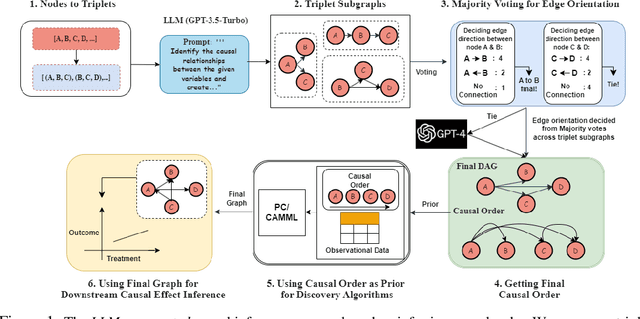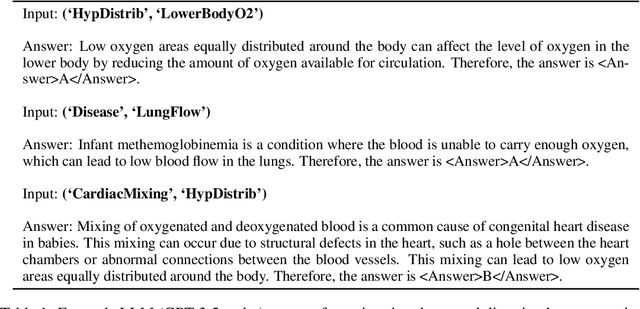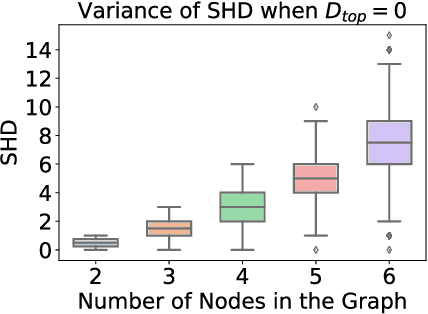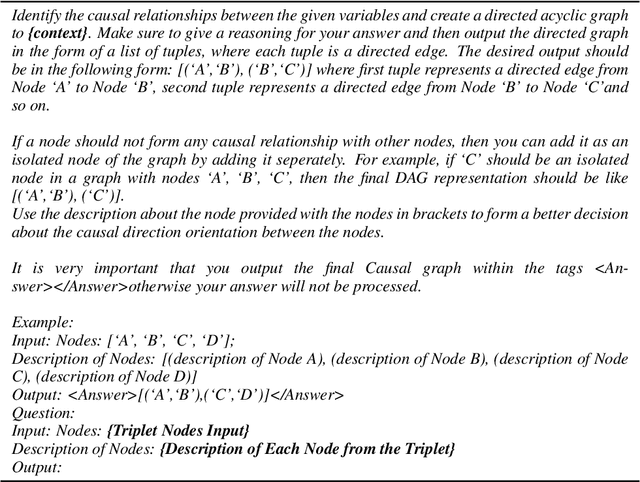Causal Inference Using LLM-Guided Discovery
Paper and Code
Oct 23, 2023



At the core of causal inference lies the challenge of determining reliable causal graphs solely based on observational data. Since the well-known backdoor criterion depends on the graph, any errors in the graph can propagate downstream to effect inference. In this work, we initially show that complete graph information is not necessary for causal effect inference; the topological order over graph variables (causal order) alone suffices. Further, given a node pair, causal order is easier to elicit from domain experts compared to graph edges since determining the existence of an edge can depend extensively on other variables. Interestingly, we find that the same principle holds for Large Language Models (LLMs) such as GPT-3.5-turbo and GPT-4, motivating an automated method to obtain causal order (and hence causal effect) with LLMs acting as virtual domain experts. To this end, we employ different prompting strategies and contextual cues to propose a robust technique of obtaining causal order from LLMs. Acknowledging LLMs' limitations, we also study possible techniques to integrate LLMs with established causal discovery algorithms, including constraint-based and score-based methods, to enhance their performance. Extensive experiments demonstrate that our approach significantly improves causal ordering accuracy as compared to discovery algorithms, highlighting the potential of LLMs to enhance causal inference across diverse fields.
 Add to Chrome
Add to Chrome Add to Firefox
Add to Firefox Add to Edge
Add to Edge